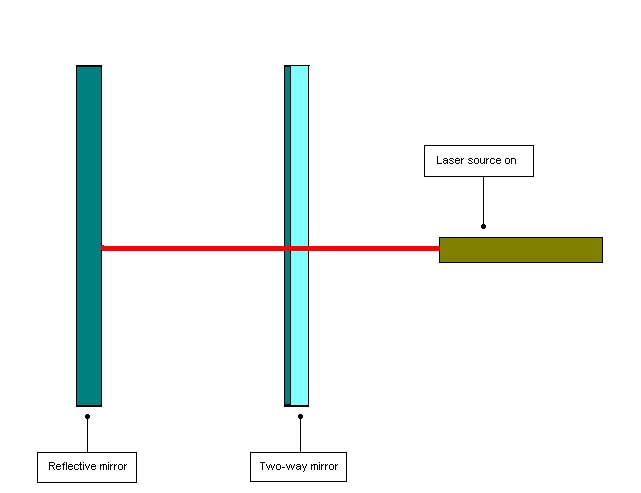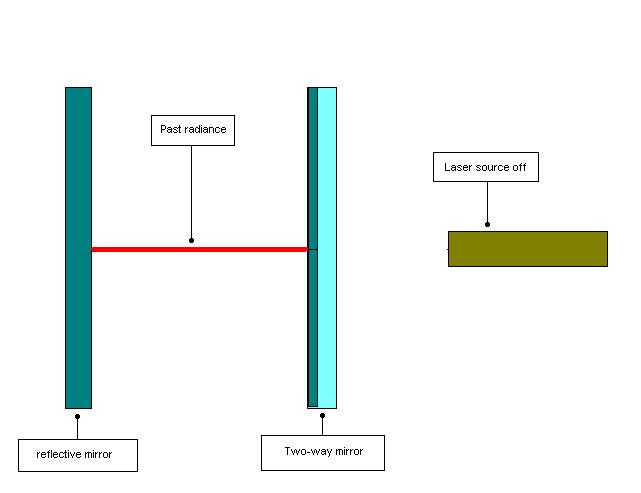SPACE-TIME
Will Man be able to handle it one day ?
Science-fiction made us familiar with time travels. Very often authors’mind is based on intuitions, but their merit is that they make us dream and, as a result, make us hope to succeed in doing it; it is a fact that many of these intuitions in the past have turned into common technologies nowadays.
At the present time, some theoretical possibilities are known, such as going at light speed or walk around a black hole, and even go for a walk inside, with the risks we know or rather we suppose.
This page does not pretend to unveil the secrets of these kinds of trips; it tries only to start up the discussion with questions and reasonings that will have the merit of having been set out.
The borderline sciences screw up and smooth out the space-time just like a sheet of paper. Masses curve it, and black holes more than anything else, up to extremes unknown to our observations.
But it is an accepted fact that the “unlimited” mass of a black hole curves the space-time; we are going to try to use this image to reach other possibilities that implement the same principle but without resorting to such an exotic object.
A simple representation consists in putting a black hole on an A-B line representing the space-time; we will see A and B moving closer, just as if we were moving closer together the two ends of a sheet of paper. The logic of this reasoning, if it proved to be sound, would enable us to carry out other experiments.
If, for the time being, we do not have a black hole nearby, and do not know how to make one, there is a technique or, more precisely, a theory that could make up for the lack of this very exotic device.
Without explaining the black hole itself, since without any direct observation it is very difficult to do it, we are going to make do with one of its effects.
Its mass tends towards infinity, which leads to stretch, curve and even tear up the space-time. We already know that any mass can have the same effects, to a certain extent according to its size, and the black hole being the known extreme will be the best example. Beside this example, we are going to take another one that has been touched in the relativity, but has never been used or even compared.
The mass of any speeded up object increases with its speed and tends towards infinity when close to the light speed.
Therefore, the direct effect of an object (micro or macroscopic) quickened at light speed, if it tends towards infinity, can be locally compared with a dynamic black hole.
Without going further, we can already see that two different causes can lead to the same effects (black hole and speeded up mass).
To be more explicit, and get a naïve vision of the thing, let us go back to the A-B straight line on which we had put, at the beginning, a black hole, and replace the latter by one or several objects quickened at light speed, with a trajectory perpendicular to A-B line. We should notice a shortening of the A-B space.
Without coming to an hasty conclusion, and by simple inference, if the attraction of a black hole, by its “infinite” mass, leads really to curve the space-time on the spot, the “infinite” mass of whatever object, close to light speed, should be in a position to cause the same effects.
If the theories are right, then it is possible to think that the space-time could be handled in the near future. Amazing possibilities could be thought of, since in this simple representation, it is not forbidden to think that if several objects, instead of only one, are speeded up to (C) speed, on the same plane, between two points, we could then make local A to be next to distant B.
The difficulty in proving this kind of things comes from the fact that it is difficult to ascertain such possibilities or assumptions. Nevertheless, the possibilities of discovering protocols for experiments that would allow validating these assumptions, should exist.
I let any researcher take care of doing it but, for my part, I make a proposal. Let us take a continuous laser or particles beam with, as a target, a detector measuring the course time and A-B distance.
Let us take several other lasers, side by side and quite parallel, and let us manage to make the latter cut A-B beam perpendicularly.
If the A-B detector changes its value, then it will be possible to think that we are facing a shortening of the A-B distance or a change in the course time of the beam.
PLAYING WITH THE LIGHT
Experiment protocol N°2
This kind of experiment has nothing to see with the previous one. But insofar as it can help to underscore the resurgence of the past in the present time, it will be brought to mind.
We take two mirrors; the first one is a reflective mirror (A), and the second is a two-way mirror (B).
These two mirrors are set face to face on their reflecting side at a distance (X).
Perpendicularly and outside the device, a source of continuous laser radiance is set so that the ray goes through the two-way mirror and ends up trapped between the two reflective surfaces.
We must see that, when the laser source is cut off, the reflection of the ray between the two mirrors goes on, for a very short time, whereas the source is over.
This observation can lead to the following conclusion: the past of the emitting source can be perceived whereas the latter has been cut off.
On the basis of this experiment, let us set a man between two large enough mirrors; we can notice an infinite number of images of this man between the two mirrors.
Now, let us imagine this man can move very quickly and goes out of the reflection field of the two mirrors instantaneously.
His farthest reflection must be perceptible whereas he is no longer in the reflection field; then we can conclude that his image is still here, while he is already elsewhere.
In this example I have deliberately chosen a person so as to make the experiment more vivid, but the latter can be carried out with a serious protocol.
Of course, it is only a thinking experiment, but it leads to further thought.


Bastita Bernard. le 16 mars 2006